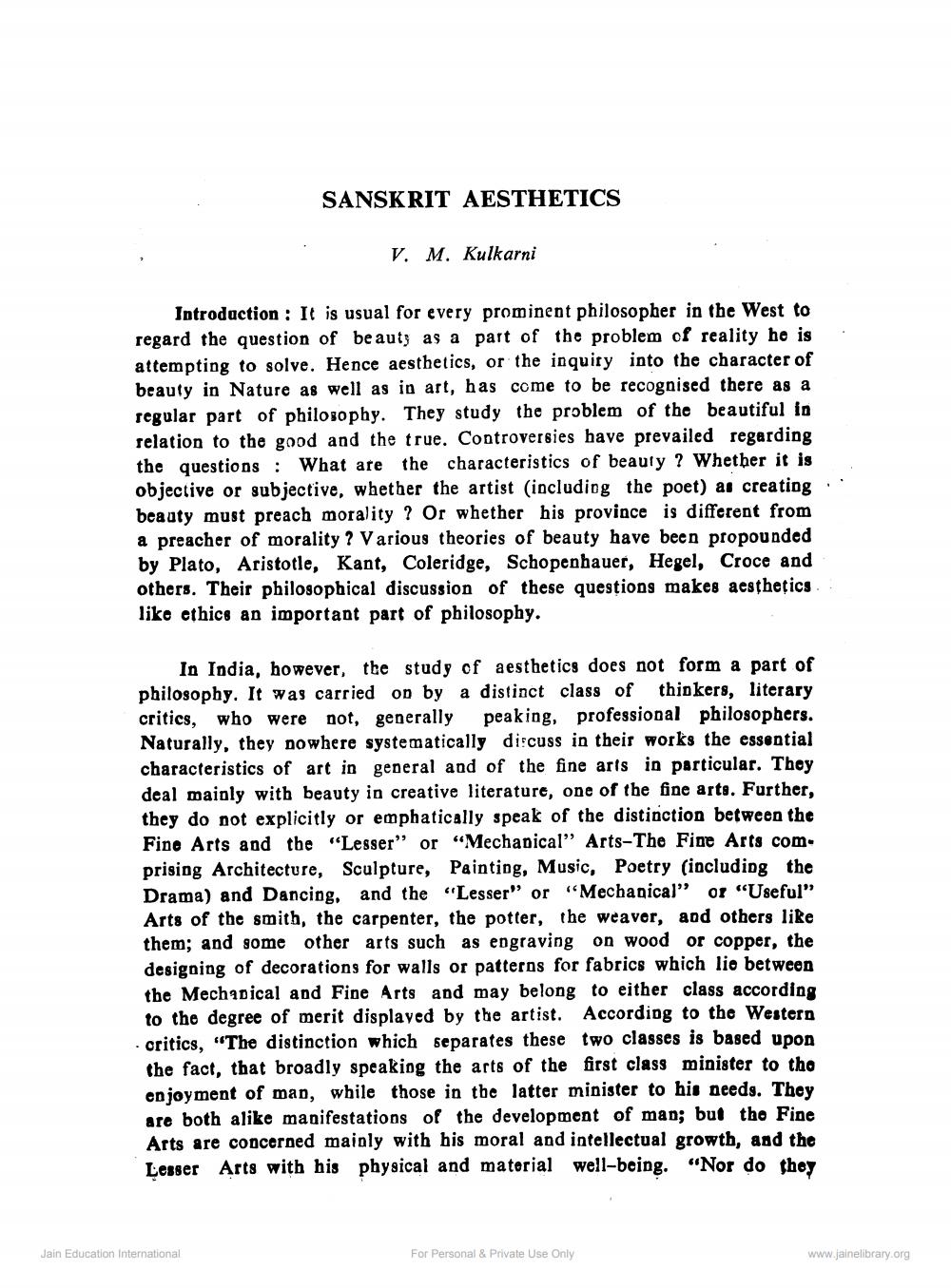________________
SANSKRIT AESTHETICS
V. M. Kulkarni
Introduction : It is usual for every prominent philosopher in the West to regard the question of beauty as a part of the problem of reality he is attempting to solve. Hence aesthetics, or the inquiry into the character of beauty in Nature as well as in art, has come to be recognised there as a regular part of philosophy. They study the problem of the beautiful in relation to the good and the true. Controversies have prevailed regarding the questions : What are the characteristics of beauty ? Whether it is objective or subjective, whether the artist (including the poet) as creating beauty must preach morality ? Or whether his province is different from a preacher of morality ? Various theories of beauty have been propounded by Plato, Aristotle, Kant, Coleridge, Schopenhauer, Hegel, Croce and others. Their philosophical discussion of these questions makes aesthetics liko ethics an important part of philosophy.
'
In India, however, the study of aesthetics does not form a part of philosophy. It was carried op by a distinct class of thinkers, literary critics, who were not, generally peaking, professional philosophers. Naturally, they nowhere systematically discuss in their works the essential characteristics of art in general and of the fine arts in particular. They deal mainly with beauty in creative literature, one of the fine arts. Further, they do not explicitly or emphatically speak of the distinction between the Fine Arts and the "Lesser" or "Mechanical” Arts-The Fine Arts com. prising Architecture, Sculpture, Painting, Music, Poetry (including the Drama) and Dancing, and the "Lesser” or “Mechanical" or "Useful" Arts of the smith, the carpenter, the potter, the weaver, and others like them; and some other arts such as engraving on wood or copper, the designing of decorations for walls or patterns for fabrics which lie between the Mechanical and Fine Arts and may belong to either class according to the degree of merit displayed by the artist. According to the Western critics, "The distinction which separates these two classes is based upon the fact, that broadly speaking the arts of the first class minister to the enjoyment of man, while those in the latter minister to his needs. They are both alike manifestations of the development of man; but the Fine Arts are concerned mainly with his moral and intellectual growth, and the Lesser Arts with his physical and material well-being. "Nor do they
Jain Education International
For Personal & Private Use Only
www.jainelibrary.org




